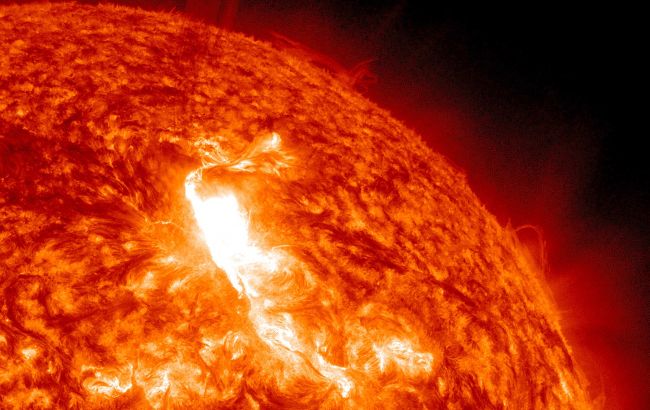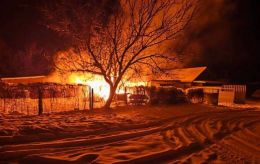Sun emits most powerful solar flare in years: Consequences
 Photo: Sun emits most powerful X-class solar flare in years (GettyImages)
Photo: Sun emits most powerful X-class solar flare in years (GettyImages)
On December 14, the Sun emitted a powerful class X2.8 solar flare, the strongest of the current solar cycle and the most intense since September 2017. This event, originating from the sunspot region AR 3514, caused a moderate radio blackout in South America and may lead to a geomagnetic storm on Earth, according to NASA.
On December 14, the sunspot region AR 3514 produced the X2.8 solar flare and a coronal mass ejection (CME) that expelled plasma and magnetic fields into the Solar System. The flare caused a two-hour radio blackout in high frequencies over South America.
Agencies like NOAA are assessing the potential impact of the CME on Earth, which could arrive around December 17 and possibly cause a minor geomagnetic storm. A weaker CME from December 13 is also expected to reach Earth sooner.
The Sun emitted a strong solar flare on Dec. 14, 2023, peaking at 12:02 ET. NASA’s Solar Dynamics Observatory captured an image of the event, which was classified as X2.8. https://t.co/4INrRFqIg7 pic.twitter.com/2dJ1YMkiXS
— NASA Sun & Space (@NASASun) December 14, 2023
These geomagnetic storms can affect power grids, spacecraft, and radio communications and may result in auroras. NOAA predicts geomagnetic activity will reach Kp5 on December 15 and 16, indicating potential auroral displays at high latitudes.
Solar flares 2017
On September 6, 2017, the Sun unleashed two substantial solar flares. The earlier flare, rated X2.2, reached its maximum at 09:10 UT. The latter, a powerful X9.3 flare, peaked at 12:02 UT and is noted as the strongest in the ongoing solar cycle. This second flare also produced significant solar radio emissions.
A coincidental combination of space weather and terrestrial conditions led to several hours of radio blackouts, impacting crucial emergency response activities during critical hurricane emergencies.
On September 6, a trio of storms progressed ominously across the Atlantic. Hurricane Irma, a Category 5 storm, devastated Barbuda in the Caribbean's Leeward Islands early in the morning, continuing its destructive path to St. Martin, St. Barthelemy, Anguilla, and the Virgin Islands. Meanwhile, Tropical Storm Katia lingered in the Gulf of Mexico, and Tropical Storm Jose was advancing from the open ocean. Later that day, both Katia and Jose were upgraded to hurricanes.
Solar flare classification
Solar flares are categorized based on intensity, ranging from B class (the weakest) to C, M, and X classes (the strongest). Each increase in class signifies a tenfold rise in energy. Furthermore, each class is divided into numbers from 1 to 9, with 1 being the weakest and 9 being the strongest within that category.
Unlike other classes, X-class flares can exceed the scale beyond 9. A notable example was in 2003 when a flare initially classified as X17 was later estimated to be around X45, showcasing the exceptional strength of such occurrences.
Northern lights
Recent discussions about potential northern lights sightings have been tied to solar flares triggering coronal mass ejections (CMEs) towards Earth. These CMEs travel at speeds nearing 5 million miles per hour and can reach our planet within a few days.
Until now, most of these ejections have been weaker, M-class events, leading to intermittent northern light sightings in the north of the U.S. Although these ejections' precise magnitude, trajectory, and scope are still under analysis, we could soon see a significant increase in aurora borealis activity, potentially visible as far south as New England.
Solar activity
The background of this event lies in the Sun's 11-year activity cycle, which is currently approaching its peak, known as solar maximum. The Sun experiences increased sunspots, flares, and CMEs during this phase.
The solar maximum is expected as early as January 2024 and is characterized by a flip in the Sun's magnetic field polarity. Sunspot region AR 3514 has been particularly active, producing two M-class flares on the same day as the X-class flare.
However, its impact on Earth is diminishing as it rotates away from our planet. This solar activity is a normal part of the Sun's cycle.
Also, recently, we wrote about the last powerful red-level magnetic storm.

